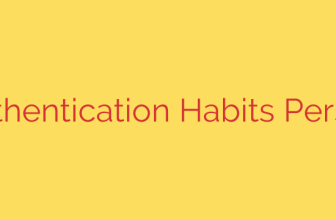
A Deep Dive into OWASP ZAP: Your Go-To Web Application Security Scanner
In today’s digital landscape, web application security isn’t just a feature—it’s a necessity. With cyber threats becoming more sophisticated, developers and security professionals need powerful tools to identify and mitigate vulnerabilities before they can be exploited. Enter the Zed Attack Proxy (ZAP), a robust, open-source security scanner that has become a cornerstone of secure development practices.
At its core, ZAP is a web application security scanner designed to find security vulnerabilities during the development and testing phases. What makes it stand out is its origin: ZAP is a flagship project maintained by the Open Web Application Security Project (OWASP), a non-profit organization renowned for its work in improving software security. This backing ensures that the tool is not only free and community-driven but also continuously updated to address the latest threats.
Whether you’re a seasoned penetration tester or a developer new to security, ZAP offers a comprehensive suite of tools to fortify your applications.
How Does ZAP Work? The “Man-in-the-Middle” Advantage
ZAP’s primary strength lies in its ability to function as a “man-in-the-middle” proxy. This means it sits between your web browser and the web application you are testing. By intercepting and inspecting all the traffic that flows between them, ZAP gains deep insight into the application’s behavior.
This proxy-based approach allows ZAP to perform two main types of scanning:
- Passive Scanning: In this mode, ZAP passively observes the traffic without modifying requests. It analyzes the responses from the server to find potential issues like missing security headers or information leakage in comments.
- Active Scanning: This is where ZAP takes a more aggressive approach. It sends a wide range of malicious-style requests to the application to actively probe for vulnerabilities like SQL Injection, Cross-Site Scripting (XSS), and insecure configurations.
By combining both methods, ZAP provides a comprehensive overview of an application’s security posture.
Core Features That Make ZAP a Powerhouse
ZAP is packed with features designed for both automated and manual security testing, making it incredibly versatile.
Automated Scanner: For those needing a quick assessment, the automated scanner is invaluable. You simply provide a URL, and ZAP will crawl the web application, discover its structure, and launch a series of attacks to identify common vulnerabilities. This is perfect for initial security checks and integration into automated workflows.
Manual Interception Proxy: For in-depth testing, ZAP allows security experts to intercept, view, and modify individual HTTP/S requests and responses. This granular control is essential for uncovering complex business logic flaws that automated scanners might miss.
Powerful Fuzzer: Fuzzing is the process of sending unexpected, malformed, or random data to an application’s inputs to see how it reacts. ZAP’s built-in fuzzer can be used to discover hidden vulnerabilities related to input validation, buffer overflows, and error handling.
API Security Testing: Modern applications heavily rely on APIs. ZAP is equipped to test and secure these critical components, supporting various formats like REST, SOAP, and JSON.
Extensible with Add-ons: One of ZAP’s greatest strengths is its flexibility. It features a marketplace with a vast library of add-ons created by the community. These extensions can add new scanning rules, integrate with other tools, and enhance reporting capabilities.
CI/CD Integration for DevSecOps: ZAP is designed to be a core tool for DevSecOps. It can be run in a “headless” mode via the command line and easily integrated into continuous integration/continuous delivery (CI/CD) pipelines. This allows teams to automate security testing, ensuring that vulnerabilities are caught and fixed early in the development cycle.
Actionable Security Tips: Getting Started with ZAP
Integrating ZAP into your workflow is a proactive step toward building more secure applications. Here’s how you can get started:
Run an Initial Automated Scan: The easiest way to begin is with the “Quick Start” automated scan. Input the URL of the application you’re developing or testing (ensure you have permission) and let ZAP perform a baseline assessment. This will give you an immediate list of potential low-hanging fruit to address.
Manually Explore Your Application: Configure your browser to use ZAP as its proxy. As you navigate through your web application, ZAP will map out its structure and passively scan the traffic. This is a great way to understand your application’s attack surface.
Focus on High-Risk Areas: Use the active scanner to target specific parts of your application that handle sensitive data or complex logic, such as login pages, user profile forms, and payment processing functions.
Incorporate into Your Pipeline: For development teams, the biggest win is automation. Work to integrate ZAP into your CI/CD pipeline to run automated scans with every new build. This “shift-left” approach to security is crucial for catching issues before they reach production.
In conclusion, OWASP ZAP is more than just a security tool; it’s a comprehensive framework for building and maintaining secure web applications. Its combination of automated scanning, manual testing capabilities, and extensibility makes it an essential asset for developers, QA engineers, and security professionals alike. In an era where a single vulnerability can have devastating consequences, integrating a tool like OWASP ZAP is no longer optional—it’s an essential part of building secure, resilient applications.
Source: https://www.linuxlinks.com/zap-web-app-scanner/








